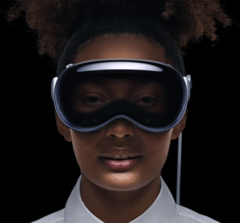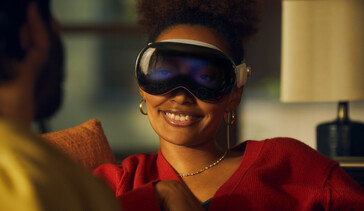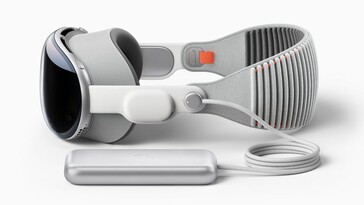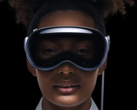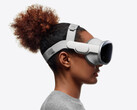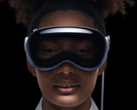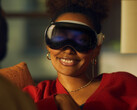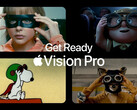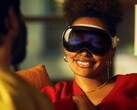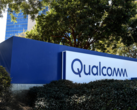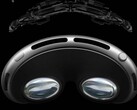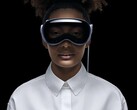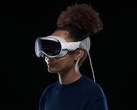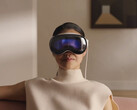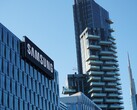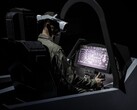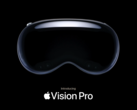Apple’s Vision Pro headset release is imminent with device set to reach customers from February 2. While there are certainly some Apple fans very much looking forward to the device, there doesn’t appear to be the same level of anticipation preceding the launch of an all-new Apple product. Even though the Vision Pro is arguably the best AR/VR headset made to date, the question is, does that actually change anything? There has always been potential in the category. As Apple CEO Tim Cook said in an interview with GQ ahead of the unveiling of the Vision Pro last year:
It’s the idea that there is this environment that may be even better than just the real world—to overlay the virtual world on top of it might be an even better world. If it could accelerate creativity, if it could just help you do things that you do all day long and you didn’t really think about doing them in a different way.
However, even the most successful company in the category to date, Meta’s Reality Labs, hasn’t been very successful. It lost $3.7 billion as recently as the third financial quarter of 2023 and has been hemorrhaging cash quarter over quarter. From Microsoft’s perspective, headsets are a dead end. Even with the launch of the Apple Vision Pro imminent, the company just announced that it is axing its Windows Mixed Reality interface embedded in Windows. This is not exactly a category that consumers have embraced. Apple may not always be first to launch a product, but they are known for “reinventing” a category, by fixing issues that have been pain points for consumers and dramatically improving the overall user experience in the process. However, when Tim Cook was less bullish about headsets, he said this in an interview with The New Yorker back in 2015:
We always thought that glasses were not a smart move, from a point of view that people would not really want to wear them. They were intrusive, instead of pushing technology to the background, as we’ve always believed. We always thought it would flop, and, you know, so far it has.
The Vision Pro Does Not Fix Many of the Existing Issues with Headsets
Which begs the question; what exactly does the Apple Vision Pro do to address the fundamental problem with headsets that people generally don’t want to strap a computer to their face? Based on what we’ve seen and heard so far, the Vision Pro doesn’t do anything to address this concern at all as it is reported to be quite heavy. Where the Meta Quest 3 - the most popular headset on the market - is completely standalone and relatively light, Apple’s Vision Pro is heavy enough to warrant the inclusion of an "optional" double loop headstrap to help make it more comfortable to wear. While the Meta Quest integrates its battery into the headset, the Apple Vision Pro requires a dongelized battery puck that plugs into the side of the device and needs to be positioned in a user’s pocket. So in other words, comfort and practicality of wearing the Vision Pro are suboptimal from the get go. Yet, Cook originally argued that people didn’t really want to wear a headset because they are clunky - what would he have thought, then, about a headset that required double looped overhead straps for comfort with a dongelized battery puck hanging off it?
Another fundamental criticism Cook had of headsets is that the technology is intrusive. Apple, he said, has always believed in “pushing the technology to the background.” However, the Vision Pro slaps that technology straight onto the user’s face just like any other similar headset that has come before, pushing them headlong into the computing environment as a participant within it. Having used many AR and VR headsets over the years (including some of the original Oculus prototypes back in the day), I can report the experience is undoubtedly cool. Immersion into a virtual world can be exhilarating as you are taken into another world. But headsets aren't something you necessarily want to wear all the time or that often, especially after the initial thrill wears off.
Also, what isn’t cool about headsets is the motion sickness that can come with certain experiences, or the fact that headsets like the Vision Pro quickly become impractical to put on and take off all the time. Which is why many headsets just end up becoming e-waste as Microsoft recently explained in response to news that it is deprecating Windows Mixed Reality – right ahead of the Vision Pro launch, no less. Having coughed up $3,500 might discourage early adopters of the Vision Pro from consigning their headsets to the scrapheap, but that shouldn’t be anyone’s sole motivation for wanting to use a device. It needs to be something enjoyable to use, easy to use, and offer a wide range of use cases that are actually more compelling than how we usually interact with technology for work and play.
Spatial Computing and AR/VR are the Same -- Despite What Apple Says
There is also nothing actually new at all about what Apple is calling its “spatial computing” paradigm, despite the company's attempts to spin it as being somehow different to existing AR and VR headsets. It isn’t - spatial computing and AR/VR computing are one and the same. When Apple unveiled the Vision Pro last June, it undoubtedly popularized the term, and in doing so, the company has been busy trying to appropriate it as its own. In the lead up to the launch of the Vision Pro, Apple has been using the slogan “The era of spatial computing has arrived” as though it had never existed previously. However, the term was was first defined nearly two decades ago, and Qualcomm, Microsoft and Meta have all been using the term over the past several years to describe their AR and VR efforts, as they are indeed forms of spatial computing.
Unsurprisingly then, little that Apple has shown of the “spatial computing” experiences offered by the Vision Pro headset to date are in any way fundamentally different from the AR/VR experiences we have already seen from other headset makers. Other makers have also shown users wearing their headsets in scenes with people communicating with others in virtual environments, interacting with multiple monitors that wrap around users using either physical or virtual keyboards and mice, watching movies, playing games, meditating and so on. All of these are 3D spatial computing experiences with Apple's interpretations predictably more polished, if anything.
So What About the Vision Pro is New?
What is new is that the Vision Pro packs in a wide array of technology more advanced than we have previously seen in a headset. The visual fidelity of Vision Pro experiences have been taken to an all-new level thanks to micro-OLED displays each delivering better than 4K resolution to each eye. EyeSight is a novel feature that uses an external display built into the headset visor to project the user’s eyes/expressions to outside observers. Undoubtedly, visionOS will be the most polished and sophisticated headset UI to date which coupled with Apple’s controller-free approach that uses hand and eye movements no doubt impressive. These are monitored by high-performance tracking sensors with the data processed by the new R1 chip to minimize lag, while the OS and apps are powered by the Apple M2 chip.
But of course, all of this comes at a substantial price premium over just about any headset on the market at an eye watering $3,500. Further, many of the initial offerings will be 2D iPad apps and video and game content presented in a 3D environment. iPhone 15 Pro users will be able to create their own 3D video content to watch with Vision Pro. However, with the headset priced so high, and its launch limited to just the US market in 2024 – and no guarantees that Apple will be able to take headsets out of their current niche in the market – it is unclear whether developers will wholeheartedly embrace the platform. Indeed, early developer interest has been muted and Apple's latest press release doesn’t point to any particular killer new apps specially made for the device.
But Challenges Remain, and Not Even All Apple Execs are Convinced
But as noted earlier, nothing that Apple brings to the table with Vision Pro actually solves fundamental issues that have consigned headset wearing users to being anything more than a niche market. This is because putting them on and immersing oneself in a digital world and then exiting it over and over again becomes old, pretty quickly. And lets not forget the challenges that even 3D TV makers had just trying to get people to put on relatively lightweight glasses on a regular basis - that fad died out pretty quickly because the wider consumer market found even that too much of a hassle.
While Apple has eliminated clumsy controllers from the user experience with its new eye and gesture tracking system, there is no suggestion that any of this makes being productive any easier than simply opening a laptop or booting up a Mac to get work done. “Cooler” perhaps, but not necessarily easier or better. In fact, Bloomberg's Mark Gurman goes as far as to say that the Vision Pro virtual keyboard -- a critical element of the interface and user experience -- is extremely clunky to use and "is a complete write-off."
There are also skeptics of the Vision Pro within Apple itself. As the New York Times reported, early enthusiasm for the concept of a lightweight headset (more akin to regular glasses) that could replace an iPhone eventually gave way to concerns about its price, its usefulness and the fact that the headset market has yet to take off. Even though the project was touted internally as the next big thing, staff left the project after it started to evolve into something more akin to a regular AR/VR headset that we are all familiar with – albeit with the typical Apple design flair. Needless to say, staff existing a flagship project because of a lack of enthusiasm for it is hardly promising. Even one of Cook’s top lieutenants, hardware technology boss Johny Srouji is said to have likened the Vision Pro to a “science experiment,” according to Bloomberg.
Spatial Computing Has Always Had Potential, but...
It is easy to understand why the tech industry has been excited by the possibilities of spatial computing/AR/VR over the past decade or so. Placing a digital layer over the physical world, as with augmented reality, offers tremendous potential for everything from navigating to being provided real-time information about what you are seeing. Similarly, VR offers incredibly immersive experiences where the user can very much become a part of the action. However, so far, translating the concept with the available technology into a product that consumers will actually want to wear has been elusive. Apple now, like Meta, has invested billions of dollars chasing this dream. The “vision” of the Vision Pro, as something that could one day replace the iPhone, is a long way a way.
Steve Jobs once said, “I am as proud of the many things we haven’t done as the things we have done. Innovation is saying no to a thousand things.” This quote, considered in the context of the Vision Pro, takes on new renewed meaning. While it is hard to bet against Apple, one gets the feeling that even if the Vision Pro offers promising technology, it really is no more promising than anything else we have already seen. With overhead straps required for comfort and dongelized battery pucks, one gets the impression that there was no urgent need for the Vision Pro to launch now and in its current form. It’s not like it is a hot market segment, or that there is even any obvious upside to the segment in the short to medium term. Or that the technology is truly ready to deliver on the vision.
And this is why the Vision Pro looks and feels like it is the wrong product, at the wrong time, and at the wrong price.
Source(s)
Own




